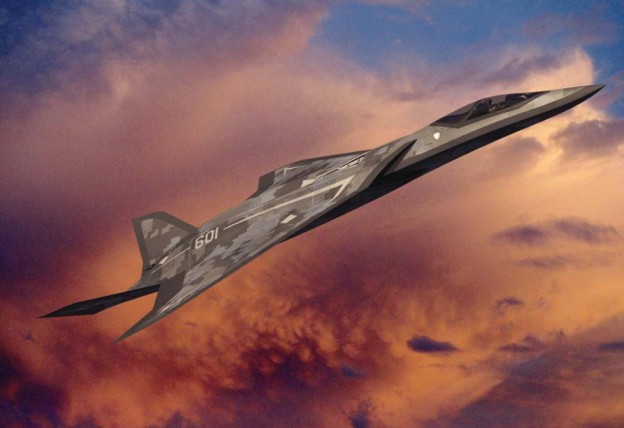
The U.S. Air Force has released a new request for a high-powered laser weapon that could be mounted on a next-generation air dominance fighter in the post-2030 era.
“The emphasis of this effort is to identify potential laser systems that could be integrated into a platform that will provide air dominance in the 2030+ highly contested Anti-Access/Area Denial (A2/AD) environments,” the Air Force Research Laboratory (AFRL) said in a Request for Information document posted on FEDBIZOPPS last week.
The AFRL is particularly interested in lasers that would be at technology readiness level four (TRL4) by October 2014. That means the basic components are already integrated enough to work together in a lab. But the USAF wants the laser to be at TRL5 or better by 2022, which means the system’s components could be integrated with “reasonably realistic supporting elements” to be tested in a simulated environment.
“Laser and beam control systems are being investigated independent of platform in the flight regime from altitudes Sea Level to [65,000ft] and speeds from Mach 0.6 to 2.5,” the AFRL posting states.
The USAF is interested in three categories of lasers. These include low-power lasers for illuminating, tracking, targeting, and denying/defeating enemy sensors. The AFRL is also interested in moderate-power laser protective weapons system, which would presumably eliminate incoming missiles and high-powered lasers for offensive operations against other aircraft or ground targets.
The development of directed energy weapons are an ongoing trend with the Department of Defense. The U.S. Navy has been working on a shipboard solid-state laser that would be demonstrated onboard the USS Ponce (AFSB-(I)-15) in fiscal year 2014 to defend the vessel against threats like small boats.
In the past, the Missile Defense Agency and USAF tested a large chemical laser onboard a modified Boeing 747 to conduct boost phase intercepts of ballistic missiles. Similarly, the USAF tested a chemical-laser weapon from a Lockheed C-130H in 2009. If the AFRL’s project bears fruit, the new laser weapons could find themselves on a next-generation F/A-XX replacement for the Boeing F/A-18E/F Super Hornet.
In the FEDBIZOPPS posting, the USAF requests that any companies that are interested in responding to the RFI provide a detailed description of their technologies “in a militarily useful configuration”. The companies are also asked where potential pitfalls might lie and how best to address those.
The AFRL is also looking for a rough cost estimate for developing offensive laser systems.





